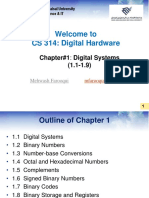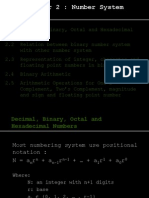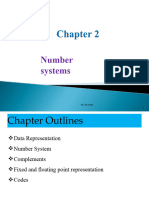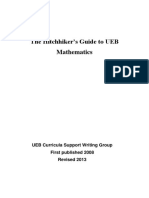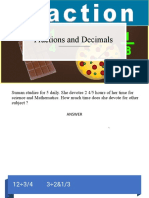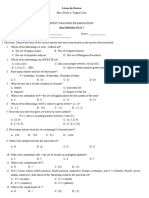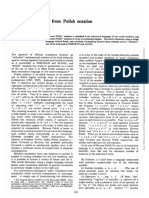0% found this document useful (0 votes)
43 views6 pagesCH 2. Data Representation
Chapter 2 of Class 11 Computer Science covers data representation, including various number systems such as binary, octal, decimal, and hexadecimal, along with their conversions. It also discusses character encoding systems like ASCII, ISCII, and Unicode, highlighting their definitions, bit sizes, and limitations. Understanding these concepts is essential for effective data processing in computer systems.
Uploaded by
Jaya DagaCopyright
© © All Rights Reserved
We take content rights seriously. If you suspect this is your content, claim it here.
Available Formats
Download as DOCX, PDF, TXT or read online on Scribd
0% found this document useful (0 votes)
43 views6 pagesCH 2. Data Representation
Chapter 2 of Class 11 Computer Science covers data representation, including various number systems such as binary, octal, decimal, and hexadecimal, along with their conversions. It also discusses character encoding systems like ASCII, ISCII, and Unicode, highlighting their definitions, bit sizes, and limitations. Understanding these concepts is essential for effective data processing in computer systems.
Uploaded by
Jaya DagaCopyright
© © All Rights Reserved
We take content rights seriously. If you suspect this is your content, claim it here.
Available Formats
Download as DOCX, PDF, TXT or read online on Scribd
/ 6





